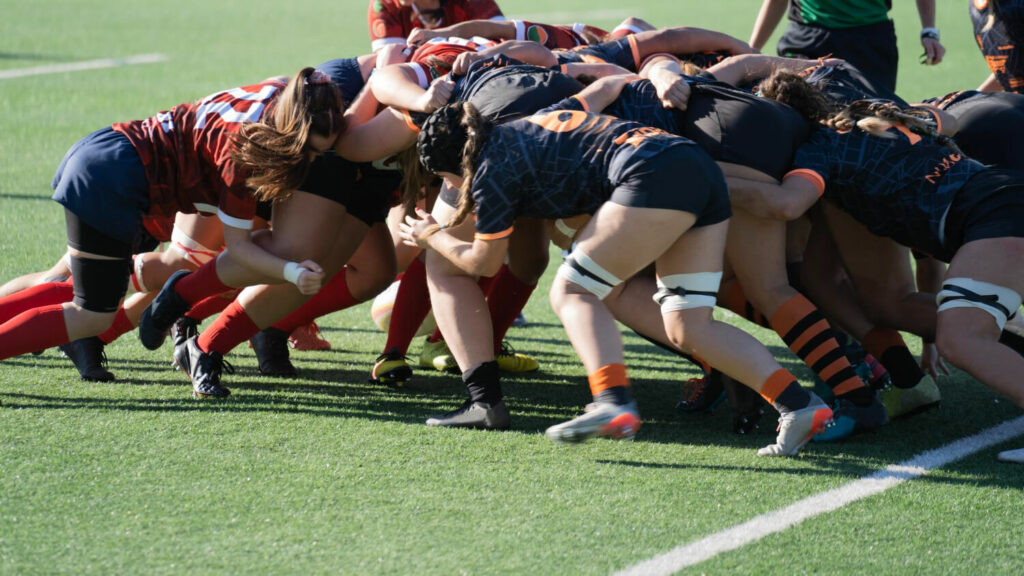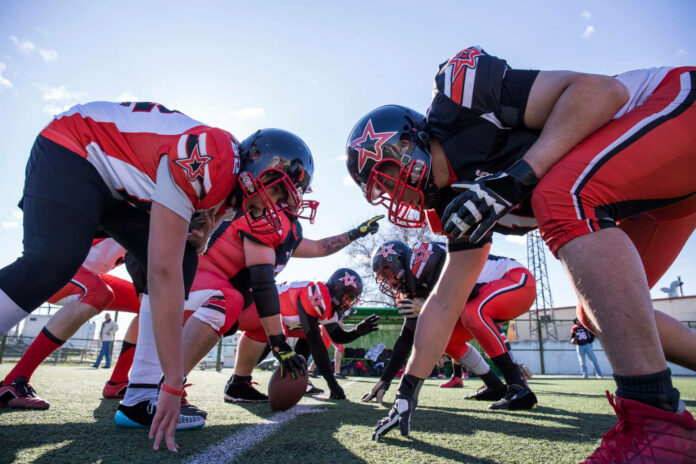College football is a beloved American pastime, drawing millions of fans to stadiums and television screens each season. While the excitement of the game is undeniable, many fans and newcomers alike often wonder: just how long is a college football game?
To answer this question comprehensively, we must consider several aspects, including the standard duration of a college football game, factors affecting game length, etc.
So, How Long is a College Football Game?
The standard duration of a college football game is generally understood to be around three and a half to four hours. Officially, the game consists of four quarters, each lasting 15 minutes of game clock time, making for a total of 60 minutes of actual playing time. However, the real-time duration extends far beyond this due to various factors inherent in the sport.
A college football game is structured as follows:
- First Half: Two 15-minute quarters, separated by a short break.
- Halftime: A 20-minute break where teams regroup, and fans are often treated to performances by marching bands and other entertainment.
- Second Half: Two more 15-minute quarters.
Beyond this basic structure, several elements contribute to the extended duration of college football games.
Factors Affecting Game Length

- Television Broadcasts: One of the most significant factors is the inclusion of television timeouts. Networks broadcasting the games insert commercial breaks, which can significantly extend the duration. Each quarter typically includes several commercial breaks, and these are longer during televised games compared to non-televised games.
- Play Review: Instant replay reviews are a crucial part of ensuring fair play but can add considerable time. Each close call or disputed play can lead to a review, pausing the game until a decision is made.
- Injuries and Timeouts: Injuries, though unfortunate, are a part of the game. When they occur, the game stops for medical staff to attend to the player. Each team is also allotted three timeouts per half, used strategically to stop the clock and plan plays.
- Incomplete Passes and Out-of-Bounds Plays: These plays stop the game clock, leading to more frequent pauses and restarts, which cumulatively extend the game’s duration.
- Penalties: Penalties necessitate officials stopping the game to enforce rules, explain infractions, and adjust the position of the ball. Depending on the number of penalties called, this can add a significant amount of time.
- Scoring Plays and Celebrations: Each touchdown, field goal, and subsequent kickoff includes pauses for celebration, commercials, and sometimes reviews.
Comparing College Football to Other Sports
When comparing the length of college football games to other sports, several differences become apparent.
For instance, a professional basketball game in the NBA lasts 48 minutes of game clock time but typically concludes in about two and a half hours. Baseball games, on the other hand, are not time-bound but usually finish within three hours.
Football vs. Basketball
- Game Clock: Basketball games have a shorter game clock but, like football, are subject to stoppages for timeouts and fouls.
- Overtime: Both sports include overtime periods, but these are typically shorter in basketball.
Football vs. Baseball
- Structured Play: Baseball’s lack of a game clock means that the duration can vary widely depending on the number of innings played and the pace of play.
- Commercial Breaks: Both sports have commercial breaks, but footballs are more frequent due to the structured quarters and timeouts.
Football vs. Soccer
- Continuous Play: Soccer games feature continuous play with two 45-minute halves and a shorter halftime, usually finishing in about two hours.
- Fewer Stoppages: Unlike football, soccer has fewer commercial breaks and stoppages, contributing to its shorter duration.
Strategies to Manage and Predict Game Length

Given the complexities and various factors influencing the length of a college football game, both organizers and fans have developed strategies to manage and predict game duration effectively. These strategies can help enhance the viewing experience and ensure that games run smoothly.
For Organizers and Broadcasters
- Optimized Scheduling: Broadcasters and organizers often schedule games with ample buffer times between them. This prevents overlap and allows games to run their natural course without time pressure.
- Efficient Time Management: Referees and game officials are trained to manage the game clock efficiently, ensuring minimal unnecessary delays. This includes quick resolutions of on-field disputes and timely management of reviews and penalties.
- Commercial Coordination: Networks work closely with the NCAA to coordinate commercial breaks strategically. This collaboration ensures that commercials are inserted at optimal times, reducing the impact on the game’s natural flow.
For Coaches and Teams
- Strategic Use of Timeouts: Coaches use timeouts strategically, not just to plan plays but also to manage the game clock effectively. By using timeouts judiciously, they can influence the game’s pace and duration.
- Hurry-Up Offense: Some teams employ a hurry-up or no-huddle offence, which speeds up the game by reducing the time between plays. This strategy can lead to a shorter overall game time.
- Injury Management: Teams prioritize player health to avoid unnecessary game stoppages due to injuries. Proper conditioning and timely substitutions can help maintain a continuous flow of the game.
For Fans and Spectators
- Expecting Delays: Fans should be aware that games can extend beyond the standard duration. Being prepared for a potentially longer game can enhance the viewing experience.
- Following Pre-Game and Post-Game Shows: Many networks offer pre-game and post-game analysis, providing additional context and entertainment. These shows can make extended game durations more engaging.
Potential Changes and Future Trends
As college football evolves, several potential changes and trends could impact the length of games. These developments aim to enhance the sport’s appeal while addressing concerns about game duration.
Technological Innovations
- Enhanced Replay Systems: Advances in technology could lead to faster and more accurate replay reviews. This would reduce the time taken to resolve disputed plays, thereby shortening game durations.
- Real-Time Data Analytics: The use of real-time data analytics by coaches and officials could streamline decision-making processes, reducing delays during games.
Rule Changes
- Adjusting Clock Management Rules: The NCAA could implement rule changes to modify how the game clock is managed. For example, reducing the number of stoppages for incomplete passes or out-of-bounds plays could help shorten games.
- Limiting Commercial Breaks: To address concerns about extended game durations, there could be a push to limit the number and length of commercial breaks during games.
Fan Engagement Strategies
- Interactive Viewing Experiences: Networks and stadiums might introduce more interactive viewing experiences, such as augmented reality (AR) and virtual reality (VR) elements, to keep fans engaged during longer games.
- Improved In-Stadium Amenities: Enhancing in-stadium amenities and entertainment options can make longer game durations more enjoyable for spectators attending in person.
Balancing Tradition and Modernity
- Preserving Game Integrity: Any changes to game length must balance the need for a more streamlined experience with the preservation of the sport’s traditional elements. The challenge lies in making the game more efficient without compromising its integrity and excitement.
- Fan Feedback: Continuous engagement with fans to gather feedback on game length and experience can guide future changes. Understanding fan preferences and concerns will be crucial in shaping the future of college football.




